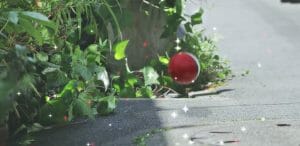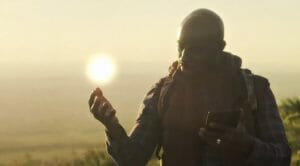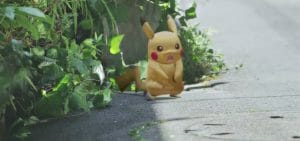
Last summer, the Pokémon craze took everyone by surprise and offered a playful distraction for the young and old alike. While Pokémon has been around for some time, the new Pokémon Go was a hit with a wider audience for one reason: It brought augmented reality to a mass audience. Nearly a year later, many educators and instructional designers are still reflecting upon what Pokémon taught us about the future of learning and how to leverage these insights.
Pokémon Go for Beginners
 Prior to the rise of Pokémon Go, Pokémon was primarily a card game played by middle graders. Then, in 2016, Pokémon Go appeared. In this game-changer, players were suddenly able to traverse the physical world via digital maps. Along the way they were asked to search for cartoon characters via their smartphones. When players found a Pokémon, they would toss Pokéballs at it until it settled down. Sound fun? It was, well, until Pokémon’s started pop up on people’s steering wheels and just about everywhere else. Indeed, by late July 2016, many regional police forces worldwide had started to report widespread Pokémon related troubles on the road. In other cases, residents of designated Pokémon sites were growing weary of the people gathering outside their homes and offices. Over all, however, the experiment was a fun, addictive introduction to augmented reality and educators and instructional designers were paying attention around the globe.
Prior to the rise of Pokémon Go, Pokémon was primarily a card game played by middle graders. Then, in 2016, Pokémon Go appeared. In this game-changer, players were suddenly able to traverse the physical world via digital maps. Along the way they were asked to search for cartoon characters via their smartphones. When players found a Pokémon, they would toss Pokéballs at it until it settled down. Sound fun? It was, well, until Pokémon’s started pop up on people’s steering wheels and just about everywhere else. Indeed, by late July 2016, many regional police forces worldwide had started to report widespread Pokémon related troubles on the road. In other cases, residents of designated Pokémon sites were growing weary of the people gathering outside their homes and offices. Over all, however, the experiment was a fun, addictive introduction to augmented reality and educators and instructional designers were paying attention around the globe.
Why Instructional Designers Were Paying Attention
 In early July, the New York Times interviewed several techies on the Pokémon craze. Analyst Jan Dawson said Pokémon Go’s success had everything to do with the fact that it was a form of augmented reality that removed the need for special equipment: “This clearly demonstrates that A.R. can cross over into the mainstream on the devices people already have in at least some cases…But it doesn’t necessarily do anything for the kind of A.R. and V.R. experiences big companies are piling so much money into.” Dawson was right. Less than a year later, Facebook has purchased VR leader Oculus and announced that it has plans to develop a user-friendly phone-based form of augmented reality. But big players like Facebook were not the only people paying attention less summer.
In early July, the New York Times interviewed several techies on the Pokémon craze. Analyst Jan Dawson said Pokémon Go’s success had everything to do with the fact that it was a form of augmented reality that removed the need for special equipment: “This clearly demonstrates that A.R. can cross over into the mainstream on the devices people already have in at least some cases…But it doesn’t necessarily do anything for the kind of A.R. and V.R. experiences big companies are piling so much money into.” Dawson was right. Less than a year later, Facebook has purchased VR leader Oculus and announced that it has plans to develop a user-friendly phone-based form of augmented reality. But big players like Facebook were not the only people paying attention less summer.
By the end of the summer, the eLearning and mLearning community was already weighing in on the Pokémon phenomenon. A post by Kae Novak on the International Society for Technology and Education site, “In a very short period of time, Pokemon Go has demonstrated the power of an AR game to get students — and everyone, really — out and learning in the real world.” In a post on IDEAFM, Pokemon GO gets kids meeting other kids. It’s like the 21st century front porch. Yes there is risk in meeting new kids, but there’s also the chance that kids will find new friends and realize that they are all a part of a bigger community. That’s a good thing.” Many educators seemed to agree.
To date, new technologies have been blamed on creating a generation of couch potatoes. Of course, the television generation was also obsessed with screens but in the 1980s, you couldn’t watch television on a bus, subway or while hiding in the bathroom during physical education class. Pokémon Go was embraced by many educators not only as a way to explore augmented reality but also as a way to get kids outside, walking and running for miles, and exploring new places, people and things.
Pokémon and the Future of Learning
 In a nutshell, the recent Pokémon Go’s craze revealed that the future of learning may be just around the corner. Despite the fact that many tech and mobile learning technologies have been investing millions in pricey VR technologies, Pokémon revealed that the future may be embedded in accessible, affordable and familiar technologies and applications. The craze also revealed that something as simple as a game basic enough for an elementary school child can be truly additive, educational and transforming when taken up a notch and unleashed on a broad scale.
In a nutshell, the recent Pokémon Go’s craze revealed that the future of learning may be just around the corner. Despite the fact that many tech and mobile learning technologies have been investing millions in pricey VR technologies, Pokémon revealed that the future may be embedded in accessible, affordable and familiar technologies and applications. The craze also revealed that something as simple as a game basic enough for an elementary school child can be truly additive, educational and transforming when taken up a notch and unleashed on a broad scale.









No Comments